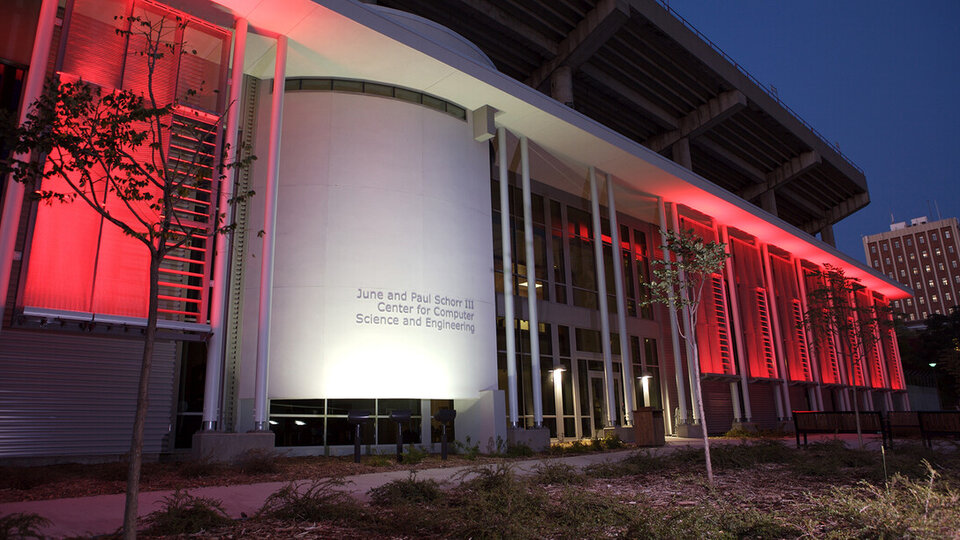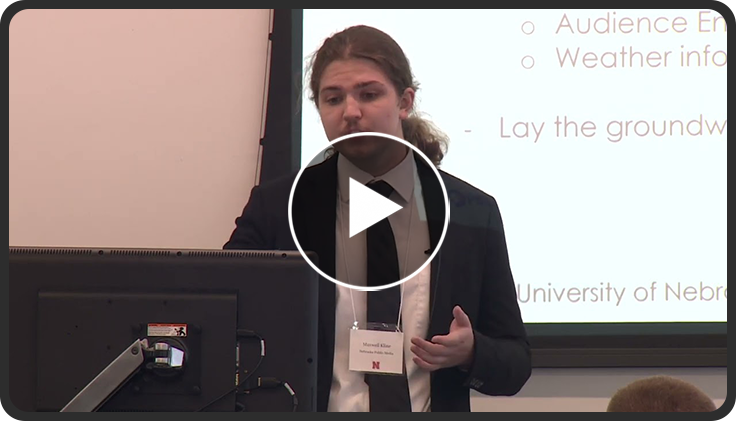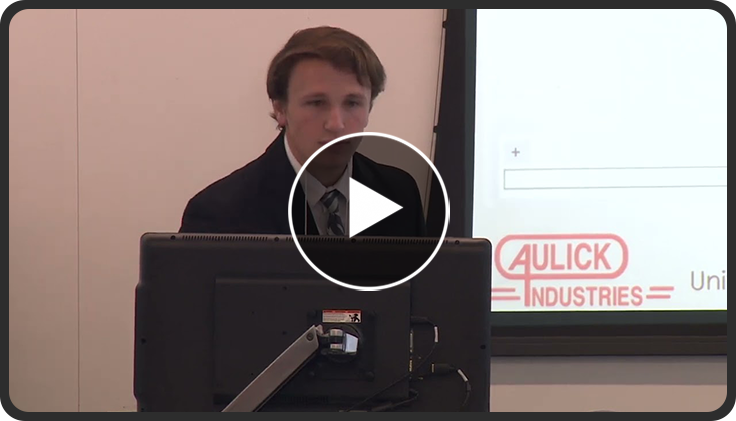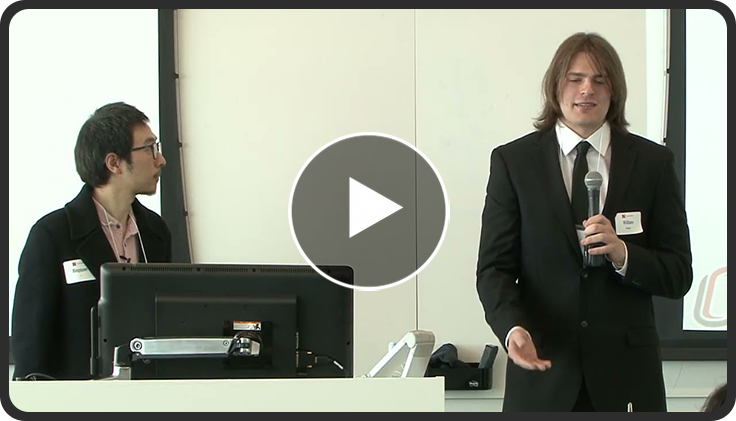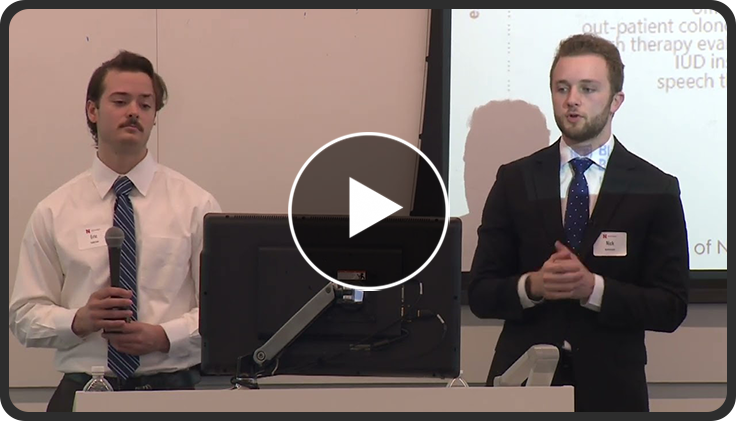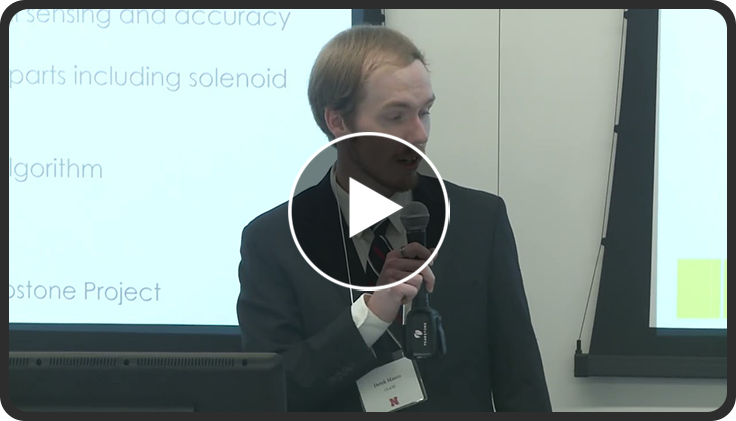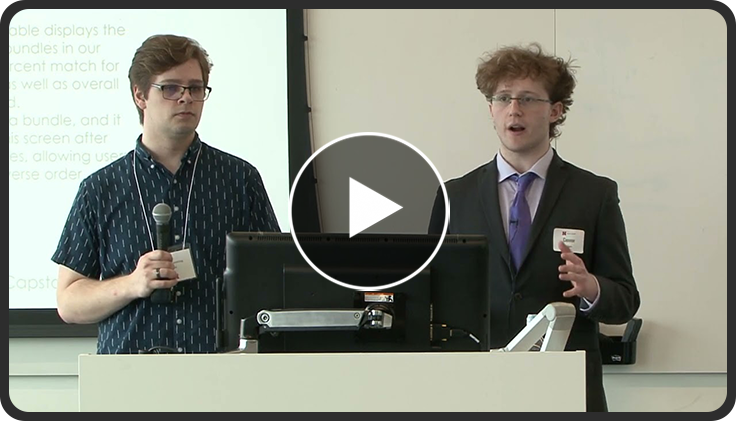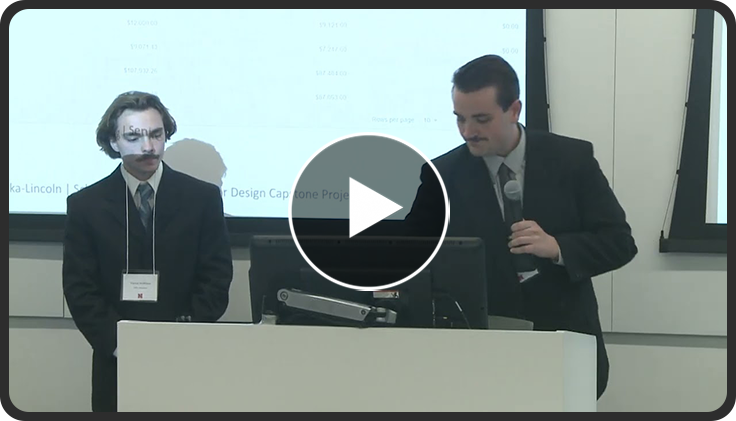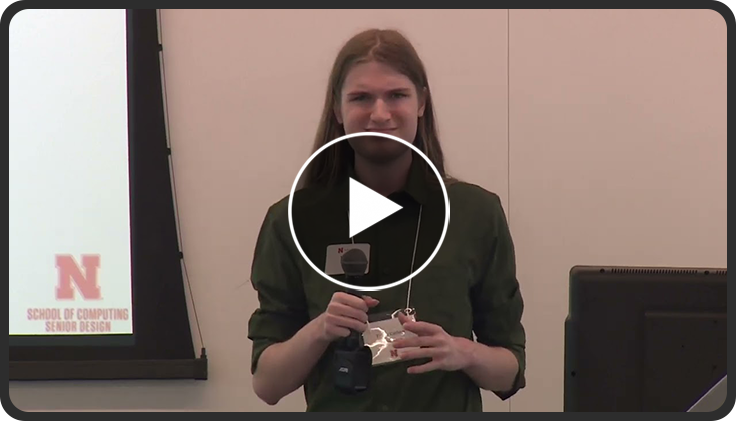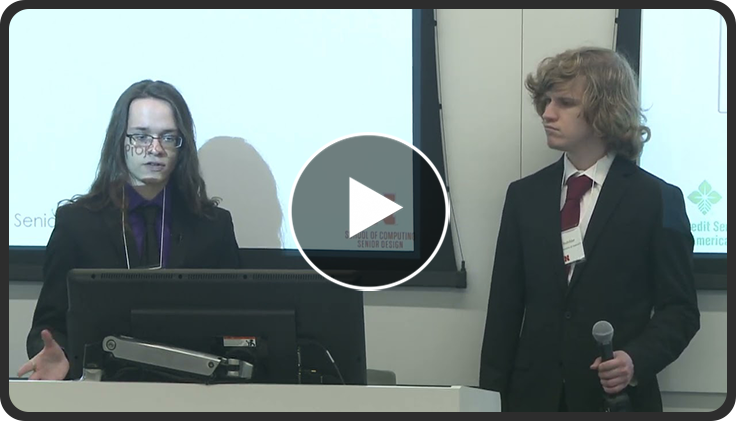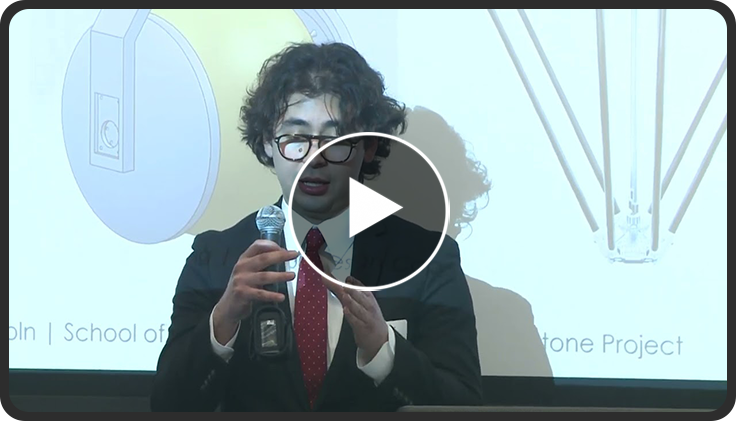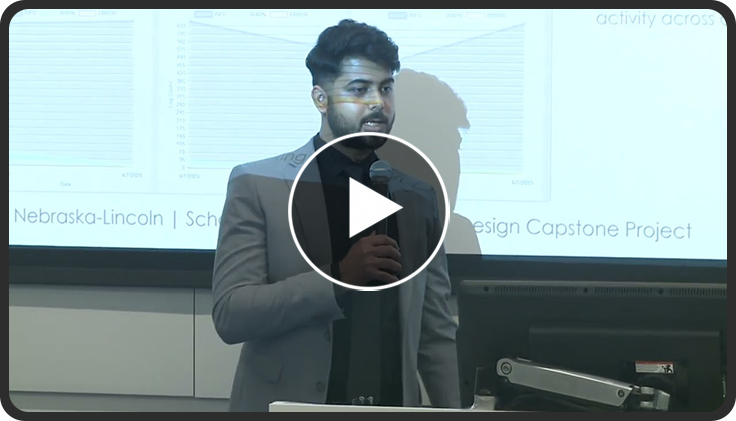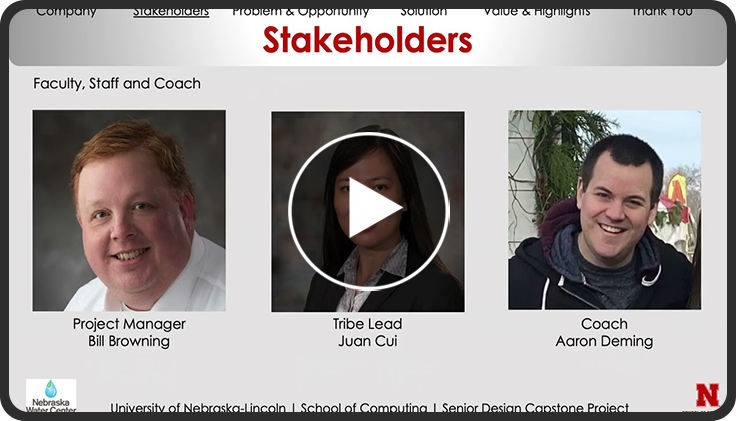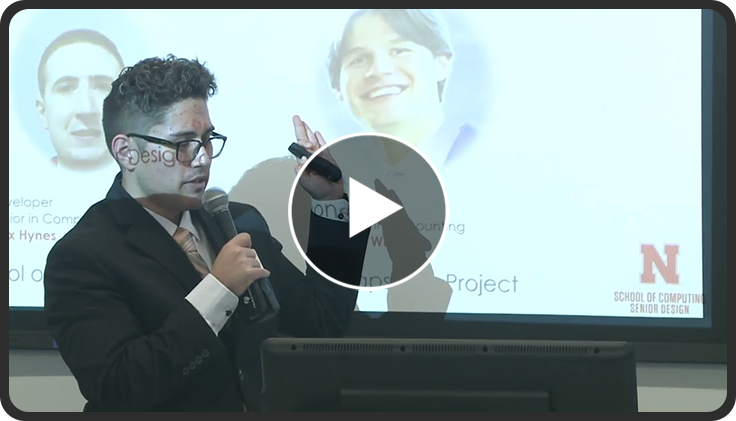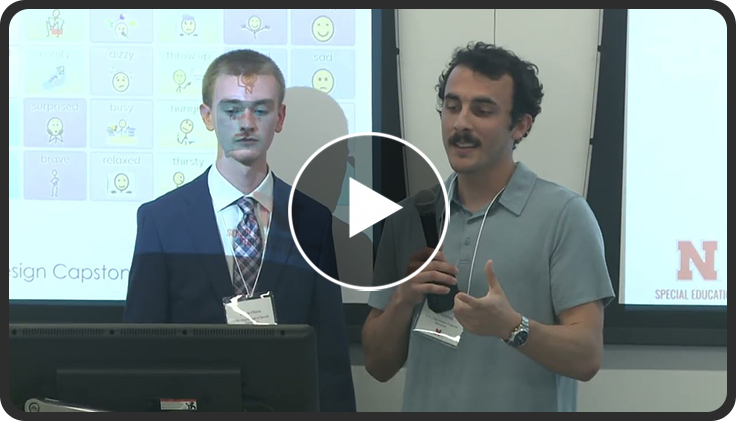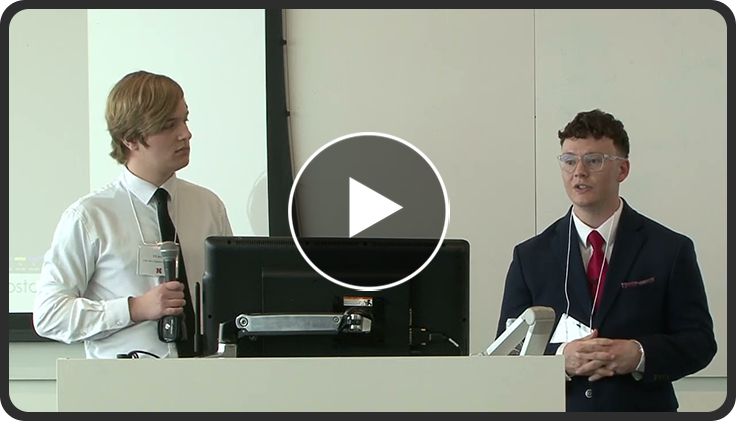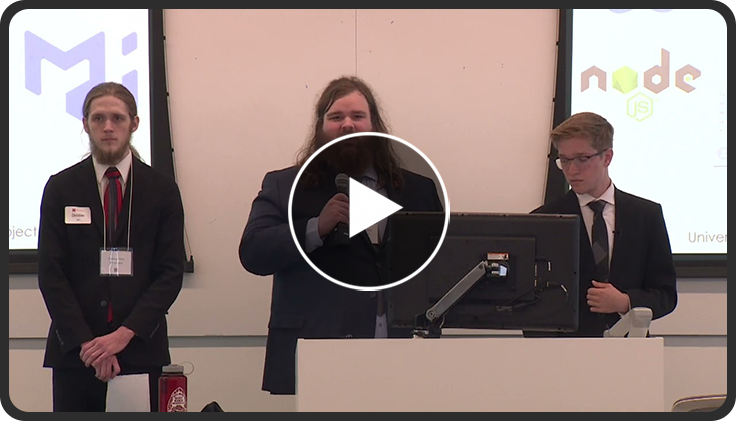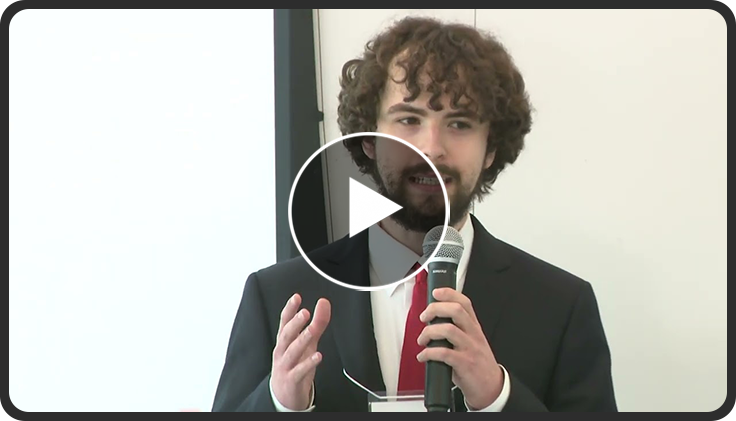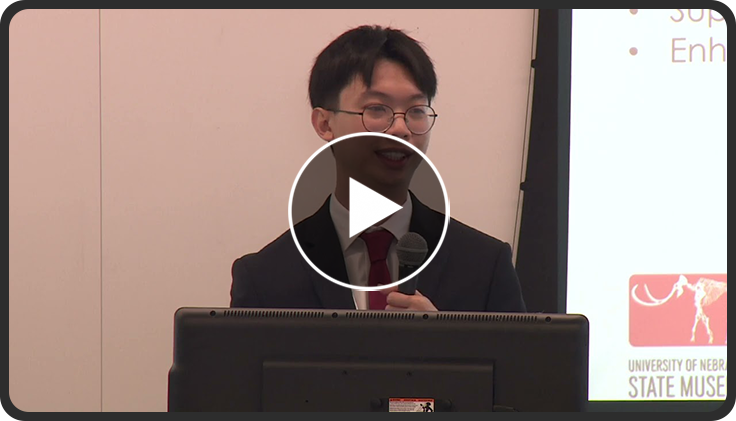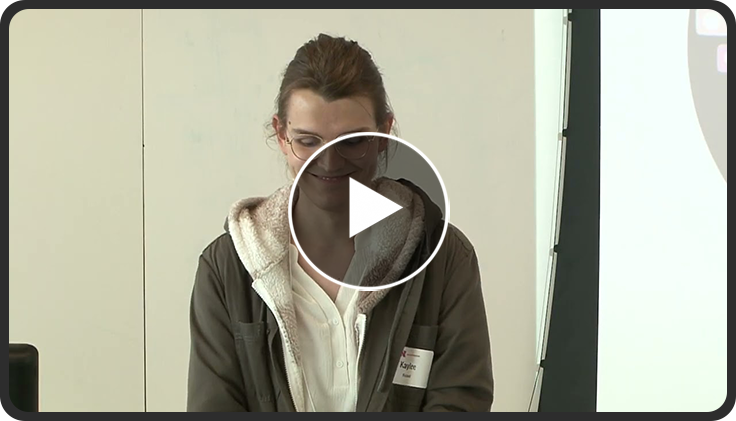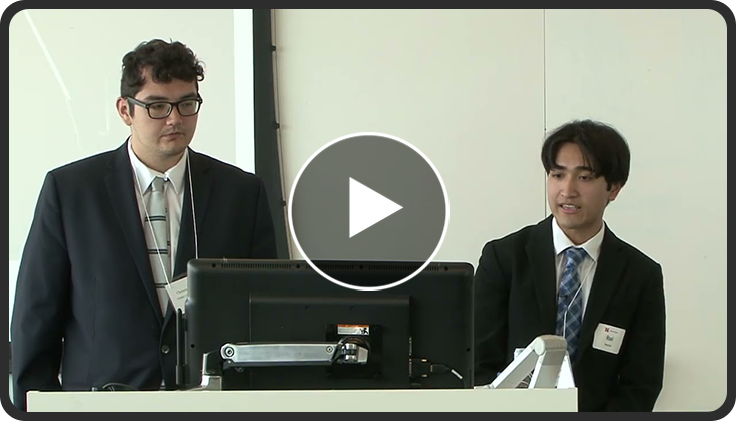2024-25 Senior Design Online Project Showcase
The Senior Design Capstone offers industry and academic sponsors a chance to collaborate with some of the brightest students on campus. In the 2024-25 academic year, the Senior Design Capstone is proud to be supported by our valued sponsors. Archives page can be found here.

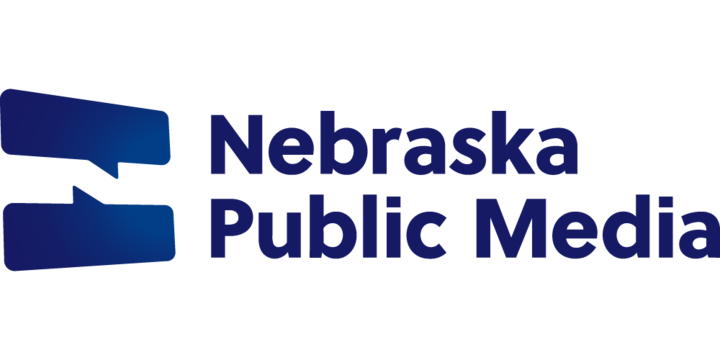
Nebraska Public Media
Nebraska Public Media has embarked on the future of NEXTGEN TV stations in the Omaha market area. This milestone is driven by the growing adoption of ATSC 3.0 broadcasting standards, ushering in a new era of interactive television. ATSC 3.0 is built on the Internet Protocol backbone, providing a solid foundation for further development, enabling broadcasters to enhance their platforms with new features, applications, and services. This technology will allow us to personalize the viewing experience for all viewers, offering instant access to local and national news content at the click of a button.
The initial intuitive and inclusive interface design outlined five key areas of development, each requiring the integration of Nebraska Public Media’s core functionalities to support a dynamic landing page. The four key applications are Live, On Demand, Weather, and News Archives, with Nebraska Public Media’s branding strategy woven across all programs. With the blueprint in place, the team began work on the live page, focusing on a seamless integration of real-time broadcasting content and an intuitive interface to enhance the viewing experience.


UNL School of Biological Sciences
This project aims to develop a virtual reality game for young scientists that simulates the real-world flight patterns of moths, using data collected by moths, bats, and spiders in their natural environment. Inspired by the behavior of bolas spiders, the moth model focuses on the bolas spider catching the moth for food. The team set out to create the same activity in virtual reality but in a more immersive environment, putting the player in the bolas spider’s perspective.
The team made the natural habitat of the bolas spider the virtual setting of the game by using a scoring system for catching the moths, and a simple interactive session featuring photos and videos about bolas spiders before playing the game. All of this requires only a virtual reality device to set up the game.
Through the project, the team designed the virtual environment and the accessibility in the game for young moth players who are young and new to virtual reality. From the beginning to the end of the game, the team overcame challenges with the virtual controller, explaining the functions of the buttons and triggers of the controller, and the visual cues that the player needs to keep in mind throughout the game.
UNL School of Biological Sciences
Spring Start - No Showcase Video
Squad Team Members | |
| Marshall Clementsen | Squad Lead & Product Manager |
| Burag Bemlian | Developer |
| Mike Griffin | Developer |
| Josh Geistom | Developer |
| Zi Yang Lee | Developer |


Aulick Industries
Aulick Industries specializes in agricultural trailer, farm truck, and ag dump cart manufacturing, as well as construction and landscaping steel and aluminum boxes. This project is a continuation of the EPC (Electronic Parts Catalog), started with the goal of organizing Aulick’s comprehensive storage center for Aulick’s parts and products that expanded on the existing framework by adding images, products, categories, and descriptions in preparation for eventual use on an online e-commerce site.
The team was tasked with creating an e-commerce manager, a set of tools for internal use by Aulick employees to make it easier to prepare EPC records for e-commerce use.
The team began by developing a search page for EPC records for internal use by Aulick employees that allowed them many options and filters to sort records within the EPC. This makes it easier to create part modification pages and add the ability to search by part type, part number, title, description, category, and sync status to the e-commerce provider.
Through the features the team has developed so far, Aulick employees are now able to efficiently navigate and modify their catalogue of products to quickly add information and watermarked images to their e-commerce site.

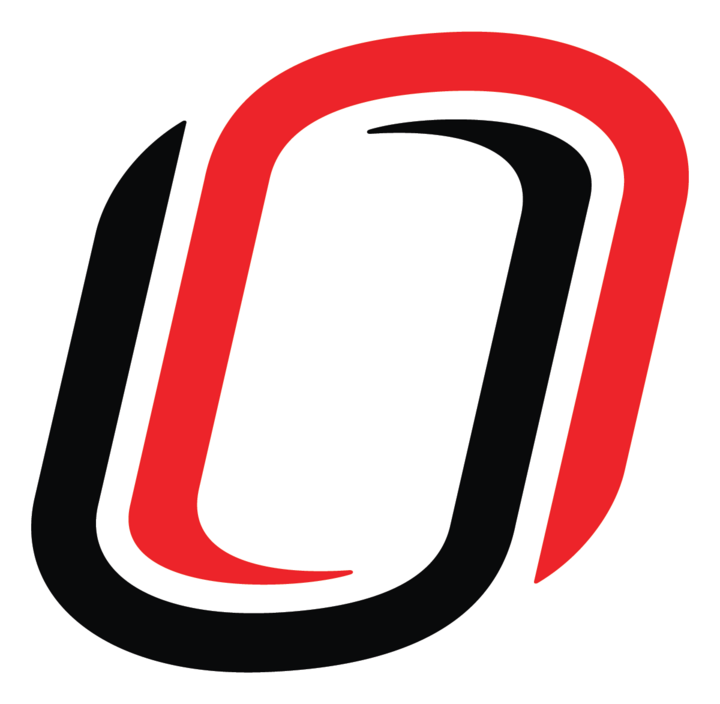
UNO Department of Biology
This project’s objective was to develop a system to enable researchers to track marmosets through video footage to identify each marmoset and track their behaviors. This process is very time-consuming for researchers to complete and can be prone to human error. There are two types of footage to process: home cage footage and social isolation footage. The first type of footage shows the marmosets in their home cage, where two marmosets are placed together and can interact with each other. The second type of footage is recorded using a 360-degree camera and needs to be dewarped first before processing can be done. The research team wanted a tool that can significantly reduce the time needed to identify and track the marmosets and complete this task. Due to issues with the two main parts (marmoset identification and behavior recognition), the team started with a different approach.
For marmoset identification, the team started by collecting and processing script that finds labeled frames (videos of marmosets in the YOLO model format, so they can be analyzed easier and can be used to train the model to extract frames from the processed videos and label each monkey in each frame with a bounding box specifying where the monkey is in the frame).
Labeled frames were then used to train a YOLO model capable of taking marmoset footage and automatically identifying bounding boxes around the monkeys as they move around.
Once identification was completed, the team was ready to move to behavior recognition. The team worked with two pieces of software, called DeepLabCut and SimBA. DeepLabCut was used to extract and label frames with keypoint labeling. In keypoint labeling, important body parts (like nose, ears, limbs, etc.) are labeled with keypoints. Then, a DeepLabCut model is trained to each of the keypoints on the marmosets and learn what each body part looks like. Once the model is trained, we can give it marmoset footage and it will label the keypoints in each marmoset in each video using the key points that it detects. Behavioral data is then extracted and saved, allowing the research team to begin their analysis.
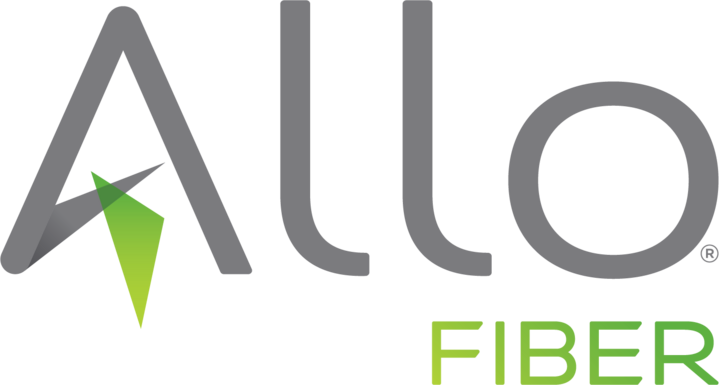
Allo Fiber
Allo Fiber’s existing process for managing Bill of Materials (BOM) is costly and time-intensive, requiring multiple people to manually download and consolidate Passive Optical Network (PON) data. The data sets are often large, and generating reports through Excel macros must also be done manually. This makes analyzing BOMs a time-consuming and expensive task.
The team developed a React-based Web application deployed on Amazon AWS. The application automates the creation, consolidation, and output of BOMs. It also integrates with Gemini to analyze the BOM data and exports the results to SmartSheets.
Agile development practices were followed throughout the project. The work was divided into sprints with five key releases, and the team held weekly meetings with the sponsor to gather feedback and adjust the solution. Some challenges included learning to utilize AWS services effectively and managing API calls within the constraints of an EC2 instance to avoid overloading or timeouts.
The automated BOM solution is expected to save Allo Fiber an estimated $24,000 to $39,000 annually compared to the previous manual process. It streamlines the BOM generation and analysis process, reducing the time and effort required while improving accuracy and consistency.
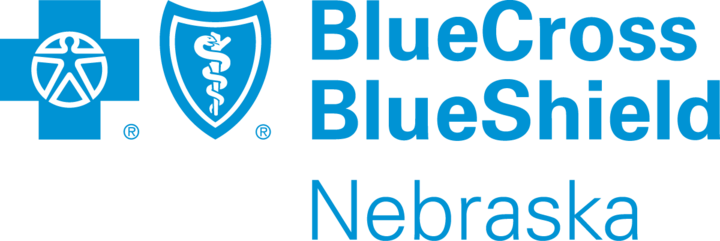
Blue Cross Blue Shield of Nebraska
The project began with a well-defined objective to automate the evaluation of BCBSNE’s system, initially, the primary challenge was the reliance on a manual testing process that required significant human effort and lacked scalability. The team needed to develop a system to automate testing and scoring of AI-generated responses while ensuring compliance with BCBSNE’s security and data privacy requirements.
To address this challenge, the team designed and implemented an evaluation engine using a combination of Azure Data Factory, Databricks, and Python to process and score responses against predefined “perfect” answers. Due to security constraints, the team used natural language processing (NLP) models to compare AI answers against predefined “perfect” responses. BERT, a machine learning model, was used to evaluate the AI responses. This required ensuring secure and precise scoring of AI-generated responses.
Throughout the development process, the team encouraged and overcame several challenges related to the Azure platform, which allowed for scalable data processing while the implementation of Azure Data Factories facilitated seamless automation of responses.
Evaluations by the final grading period, the system was fully functional, generating scores for AI responses using a standardized scale. Power BI dashboards were developed to provide real-time insights, allowing stakeholders to analyze performance trends and make data-driven decisions to refine AI-generated outputs.
This project not only streamlined BCBSNE’s AI evaluation workflow but also provided a scalable solution to handle increased data volumes in the future. The automated system significantly reduced manual testing efforts, improved evaluation accuracy, and ensured quality responses. The structured transition plan ensures that BCBSNE’s internal team can continue refining and maintaining the system for long-term success.

CLAAS
CLAAS is one of the top agricultural equipment manufacturers globally, making thousands of farm implements each year. Each of those machines has thousands of bolts that must be properly fastened. Last year, CLAAS tasked the team with developing an automated system for their torque wrenches that would attach for their torque tool. The team last year assessed the project’s feasibility, researched the best approaches, and developed a working prototype that provided numerous designs for both the detection of torque bolts and the marking of those bolts. Their work culminated with a functional prototype that was tested and proven to mark bolts; albeit it was in need of refinement parts.
The team this year refined the mechanical system, aiming to boost its accuracy. They designed and implemented a custom Printed Circuit Board (PCB) with the latest dual-core Raspberry Pi processor. The new processor allows for faster data processing and allows the system to complete its detection algorithm. The team implemented an algorithm that scans all six axes of the accelerometer data, in real time, to maximize the detection of the torque tool usage, which the team explored in coordination with CLAAS.
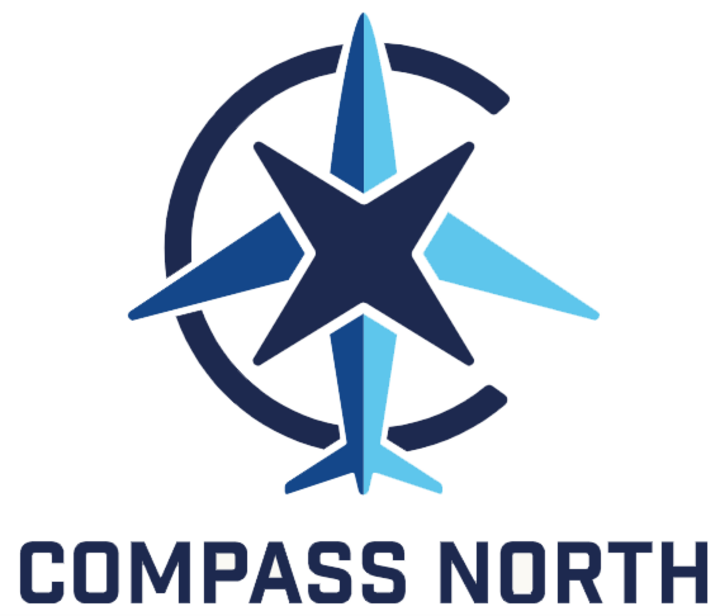
Compass North
At the beginning of the year, the team was tasked with expanding upon the existing Compass North pilot data tracking application. Pilots log flight hours, and the system MUST be functional offline, so that pilots may use it away from WiFi. In flight, pilots track flight hours, aircraft registration, flight conditions, and other flight metrics. The team was tasked with creating a comprehensive React PWA (Progressive Web Application) that robustly stores data and offers a smooth user experience regardless of internet connectivity.
The team also faced the challenge of aircraft and pilot data management, as well as trip leg information for travel. To support the usage of dozens of aircraft and flying many legs, the team used FAA data to pre-populate aircraft data, flight information, and user-entered details to cut down on errors and ensure data integrity. Trip leg information about each flight segment was also stored in the application to facilitate easy logging and simple flying.
In addition to making the application readily accessible and easy to use, the team has tailored the front-end design to support both pilots and administrative users. The app ensures that users can seamlessly transition between devices, maintaining full functionality and a consistent experience whether at a desk or in flight. The app also provides simple methods to pull up data, like flight logs, for viewing current details and logging information.

DMSi
DMSi Software is a company that provides business software solutions to the lumber and building materials industry. Some of these solutions include integrated sales automation, inventory, and accounting transactions. Currently, clients that are looking to buy lumber must manually sort through the inventory list to find the bundles that fit their specifications. This process can take a user several hours in DMSi’s system to find the right lumber and slow down the just a few minutes.
The tool automates processes of finding bundles by filtering through a database of bundles and calculating a yield score for each bundle using a yield calculator. The yield calculator uses variables like length, width, board feet, etc. A natural language processor was used to help take a user’s order and turn it into data that could be used by the yield calculator.
The tool allows for the user to input the yield calculator ranks bundles in descending order. The user is allowed to select the bundle to view the included boards in the bundle. The user can also send a request to DMSi through the ChatGPT API, which gave the ability to send prompts to ChatGPT and get a response. The prompt given described how the order request should be interpreted and how to format it so that the yield calculator could use it. The ChatGPT API responds to the prompt with the formatted data that is then used to rank the bundles based on the specifications provided by ChatGPT. The front end takes an order request by the user and displays the ranked bundles in a nice format.
The team laid a very strong foundation for the tool that will allow for future enhancements to the project to be implemented very easily, and their efforts have paid off. This project will prove to be extremely useful and could potentially set a new standard in the industry.
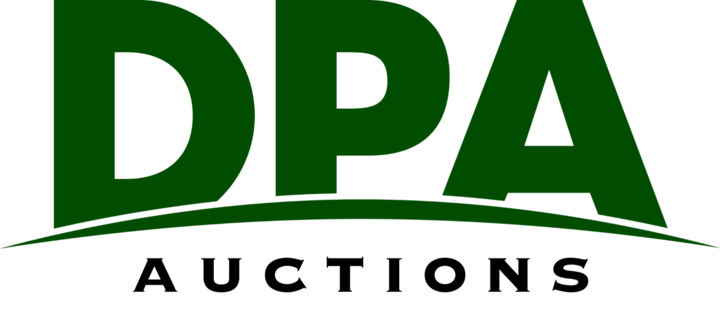
DPA Auctions
Over the past year, our project has focused on developing an advanced software tool for the agriculture and transportation sectors. The challenge was to create a solution that provides real-time market valuations, financial advisory, profitability analysis to help users maximize returns and make more informed decisions.
Many businesses struggle with scattered and outdated asset data, making it difficult to track valuations, depreciation, and total cost over a streamlined platform that integrates all this information into a single, user-friendly interface, helping users to quickly access data whether to hold or sell their equipment.
To address the challenge, we developed an auction management system to input and manage their agricultural assets efficiently. The system automatically updates valuation data each month using AI-driven analytics, ensuring fast insights. Visualizing this information provides clarity, so we incorporated intuitive dashboards to provide quick overviews of asset history, market trends, and financial health. Additionally, our system provides quick overviews of asset track both system-generated and custom value adjustments over time. By centralizing asset data and integrating predictive analytics, we provided strategic financial planning.
Ultimately, our Web application delivers a powerful yet easy-to-use solution that transforms the way agricultural businesses manage their assets. The loan tabs allow users to input and monitor loan details, ensuring that all asset-related financial information is in one place. This integration eliminates the need for separate systems and provides a more comprehensive view of financial obligations. By automating key asset-management processes and offering a clear picture of both valuation trends and financial health, our app helps agricultural businesses to optimize asset utilization and financial planning effectively.
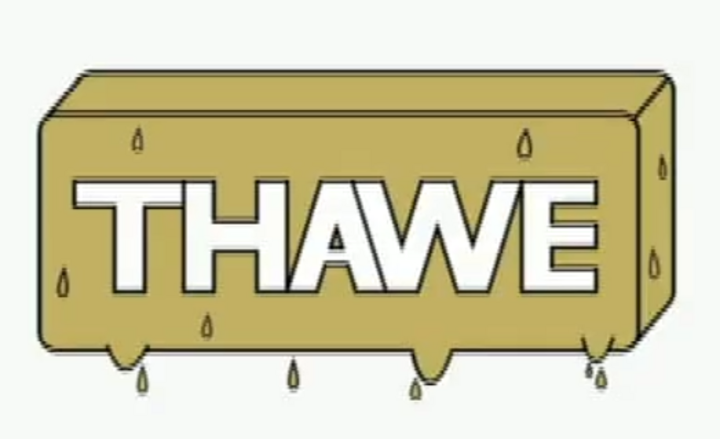
Entrepreneurs
The one concern our team had to solve was transforming our own project. After weeks of brainstorming with help from investors in Nebraska, we came up with Thawe. Thawe aims to be a platform designed to make it easier for entrepreneurs, small business owners, designers, and creators to collaborate on a single app with the functionality of a professional networking platform, creating a unique space for business relationships to grow organically. Thawe connects entrepreneurs, investors, clients, or mentors easily, making networking more natural, accessible, and enjoyable.
Unlike traditional platforms that can feel stiff or overly formal, Thawe embraces a more casual approach to networking, encouraging more organic interactions that are built on genuine connections, not just resumes or job titles. Thawe lowers the barrier to entry for people who might find platforms like LinkedIn intimidating, offering a space that encourages spontaneous dialogue, authentic conversations, and new opportunities without the pressure.
Thawe’s discovery-focused design allows users to connect based on business goals, shared values, or creative alignment with no cold messages or long forms required. The goal is to build a community of entrepreneurs who are ready to help each other thrive.
The team has spent the year building Thawe to have all the features we believe are necessary for users to have a productive and enjoyable time using the app. Features such as profile creation and customization, swiping through other users, posting, and messaging are key to the app experience. The team has also been working on other issues that are important to Thawe, such as dead profiles and fake users. Although the app has the key features of Thawe implemented, Thawe is still a work in progress as the team continues to improve the app by adding new features and changes based on feedback the team already has and will get in the future. The team plans to keep working on the app with hopes to have Thawe be a mainstay in networking in the future.

Farm Credit Services of America
Farm Credit Services of America processes numerous digital loan applications daily, akin to a conveyor belt where loans progress through various stages and require attention from multiple team members before approval. While digital loan application systems provide tremendous benefit, they complicate tracking which applications need attention, as they span across different digital platforms.
To address this, the team utilized Snowflake, a cloud-based data storage platform, to centralize data from various platforms. By leveraging SQL queries, the program tracks application details, such as approval status and booking dates. The database is regularly queried for specific changes, and when these occur, an email is automatically sent to the responsible employee, ensuring timely action.
The team developed several alerts, each requiring identification of relevant data, logic for triggering alerts, and the email address of the responsible person. The program connects to the sponsor’s in-house email messaging API to send notifications, streamlining the workflow and enhancing efficiency.

Hinco
Hinco is a company that specializes in injury prevention in the construction, manufacturing, and warehousing sectors. The goal of this project was to develop a predictive model for Hinco to be used by one of Hinco’s clients to make improvements to their workplace by finding where injury is most likely to occur.
In the first part of this project, the team focused on gathering data on the work environment and injury data from two different companies. The environmental data came from a wearable workplace device which specializes in gathering data such as noise, air quality, and other data collection. We received wearable data from two companies: a New Mexico-based manufacturing company and an Iowabased manufacturing company. The wearable devices collect data such as noise, air quality, location, temperature, and pressure. Combined with the injury data—which is a record of all injuries in the workplace for both companies—the data represents the constraints of the team to develop the predictive model.
The team primarily used Python, SQL, and sklearn to develop the predictive model. Along with the predictive model, the team made sure the application was user friendly. The only thing the user has to do is input the correct CSV file into the clearly labeled input box, click the button, and the app will generate a report with the result. The team has also implemented descriptive error messages within the app for common reasons the application may fail.

Kiewit
The Kiewit team was tasked with enhancing the company’s cloud cost visibility, usage, and waste management. The team developed an internal Web application that allows employees to easily monitor and manage their usage. The primary goal was to simplify access to the data, while also identifying areas of waste and cost anomalies. To achieve this, we incorporated interactive graphs for clear visual representation, as well as a feature for resource cost forecasting based on usage trends. This approach not only improved visibility but also helped optimize cloud resource management.
We began by designing high-fidelity Figma mockups to establish the foundational layout for the application. Collaborating closely with Kiewit stakeholders, the team aligned the design with their standard website layout, maintaining consistency with their overall company sites. Once the mockups were approved, we brought the designs to life by transforming our vision into a fully usable and interactive application.
IDS, another section available in the Anomalies tab, where users can view meaningful scores for their cloud usage, the team incorporated more detailed analysis. A standout feature of the application is the Forecasting Tool. Using a Long Short-Term Memory (LSTM) model, we are able to predict the future cost for each resource, providing valuable insights for better decision-making and cost optimization.
As the project neared completion, we added a communication feature that allows users to receive notifications when their resources exceed a predefined wastefulness threshold, helping them address cost issues promptly. Additionally, we implemented features to track resource usage and identify and address issues that would have otherwise gone unnoticed. The addition of this feature, along with the other capabilities we implemented, has significantly improved the overall cloud usage experience for Kiewit, providing better decision-making, efficiency, and forecasting accuracy, providing a comprehensive solution to the original challenge.
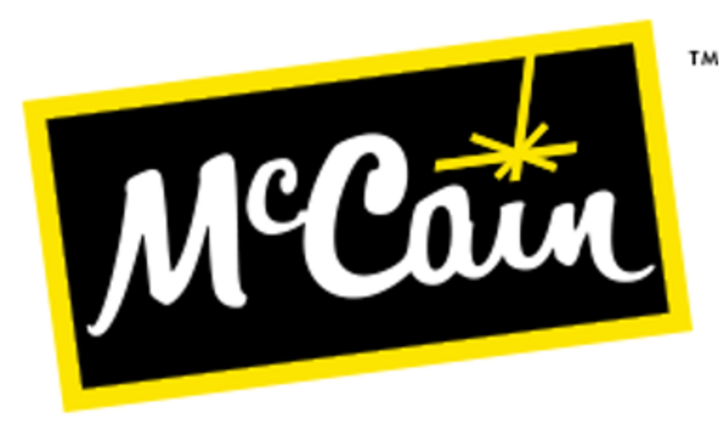
McCain Foods
McCain Foods’ Grand Island facility is experiencing inefficiencies in its onion processing line due to manual labor and limited data use. The information is not tracked seamlessly, and a great amount of labor goes into sorting and categorizing onion data. At the beginning of the project, the team was tasked with creating a system that will singulate the onions on the conveyor belt, limiting the entire factory to the speed of these initial employees, creating a logistics bottleneck. The results in lower production efficiency and higher operational costs.
We needed to design and implement a system that will aid McCain Foods with gathering critical product data and selecting hard and efficient insight that can be used to enhance data driven decisions throughout the factory. To complete this goal, the team developed a comprehensive conveyor system that will automate the singulation system of onions, automating a critical bottleneck in order to increase total onion throughput for the entire factory.
The automated onion processing system will operate in a manufacturing environment specifically at the McCain Foods Grand Island facility. This environment is characterized by an industry setting: high temperature and humidity, and hazardous materials and operating space. The system consists of sensors, advanced cameras, plant and advanced machinery, equipment, and conveyor belts. The environment may be subject to temperature fluctuations and humidity, which may impact the system’s operations, cleaning procedures, and chemicals and foodstuff, which also require proper safety measures and equipment to prevent the harm of employees, consumers, and other equipment.

Mutual of Omaha
Headquartered in Omaha, a fortune 500 company Mutual of Omaha, tasked us with the challenge of creating a privately customized webpage to swiftly trouble shoot and analyze system logs. Their existing method often took hours to analyze specific log functionalities they are looking for. With the goals of increasing customer satisfaction, reducing operating costs, and increasing efficiency, they partnered with our group from the University of Nebraska—Lincoln.
To achieve this, the team backed the implementation into a cloud log database that is seamlessly streamed into our application, allowing data to be imported and extracted without the need to download the raw logs. We created an application that displays real-time updates to ensure the most up-to-date data and selected inputs by the user. Followed by a series of testing to ensure efficient and accurate Mutual of Omaha log types.
The result was the Interactive Web Application that provides an easy and efficient way to define by their date, server, nodes, and traffic logs and identifying any trends or issues. As briefly mentioned, the users are able to interact directly with the application by choosing specific dates, times, and areas of interest within raw logs, and color modes to fit any user preferences and comfortability.
Our solution has met Mutual of Omaha’s standard requirements as it provides user-friendly tools, ease of analysis, an efficient cost by streamlining all their data on a simple Webpage, the efficiency of detecting trends and resolving issues will be enhanced. Through the University of Nebraska—Lincoln and Mutual of Omaha’s partnership we were able to deliver this unique project.
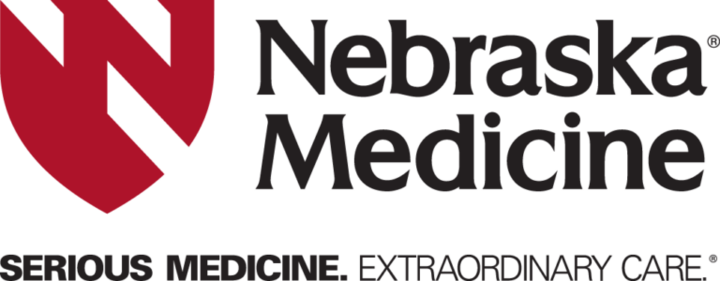
Nebraska Medicine
The vision for this project is to address critical gaps in healthcare education and infection control training through an innovative Virtual Reality (VR) simulation for the “Identify, Isolate, Inform” (I3) process. This process is crucial for managing high-consequence infectious diseases (HCIDs) in emergency departments, ensuring rapid isolation of infectious patients to prevent the spread of infection within healthcare settings. The sponsor sought a scalable, interactive training tool to enhance staff preparation and provide a realistic, safe environment for practicing infection control methods. The resources used to develop the VR simulation include Unity, FMOD, GT, and Oculus headsets.
The final solution is a comprehensive VR training module that immerses users in realistic ED scenarios. The simulation includes lifelike patient interactions, scenario-based quizzes, and dialogue between characters, and incorporates realistic elements of hospital workflows, such as PPE usage and coordination requirements within the department. The solution addresses the sponsor’s challenges by offering a scalable training platform that standardizes the I3 process, improves infection control education, enhances staff decision-making, and facilitates active engagement from healthcare workers in their training.
Nebraska Medicine
Spring Start - No Showcase Video
Squad Team Members | |
| Ali Khazaei | Squad Lead and Product Manager |
| Bharatkumar Hadwani | Development Manager |
| Manichkanti Lorer | First Semester Multi-Team Squad Lead |
| Ethan Newland | First Semester Product Manager |
| Lucy Bernard | Developer |
| Mara Holbeck | Developer |
| Karen Keshik | Developer |
| Andrew Lofgren | Developer |
| Juyton Schneckle | Developer |
| Jun Shen Yap | Developer |
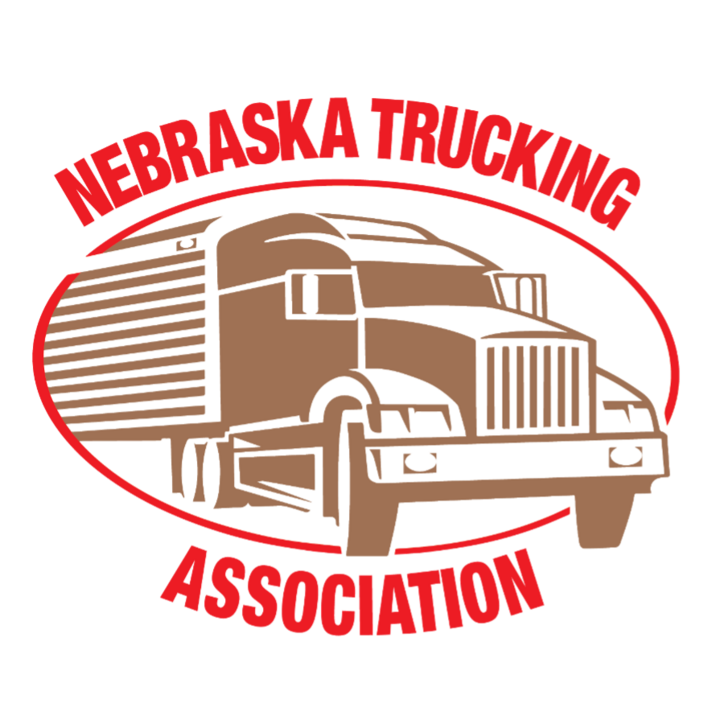
Nebraska Trucking Association
The Nebraska Trucking Association (NTA) tasked the team with creating a virtual reality (VR) simulation to expose students to diesel technology field. Currently, NTA travels to many schools and fairs showing off trucks, driving simulators, and VR experience. Their present VR solution is a learning tool for diesel tech instead of a shorter fun exploration tool, showing that the experience isn’t a realistic game that’s fun, simple, and informative to gain interest in the industry as a potential future occupation for the user. The team had the challenge of creating a fun and informative VR simulation that is easy for beginners to use with many resources and tools available to make game development simpler. Unity was the perfect choice as the team was able to create an immersive VR experience that the user can explore.
To spark interest and career exploration, making the experience both educational and entertaining, the VR experience transforms traditional recruitment efforts, making them more dynamic and impactful. Instead of passively learning, students are fully engaged, fostering a stronger connection to the profession. By leveraging cutting-edge technology, our solution helps trucking companies attract the next generation of diesel technicians, providing a rewarding career path with a new generation of workers.

Nebraska Water Center
Know Your Well (KYW) is a science program that engages middle and high school students and teachers in sampling and testing groundwater quality. Participating students receive education about groundwater science, collect data, and reflect and test water samples. While sampling, students use a Progressive Web Application (PWA) to record well coordinates, land use, and other relevant features of wells. During previous iterations of KYW, the application’s capabilities were updated, data exporting was enhanced, and single sign on through Nebraska Cloud was finished. They also began implementing functionality for uploading images to wells.
Continuing the groundwork laid by the previous iterations, the team focused on enhancing the numerous features that were created by the previous teams. The team expanded on the photo upload process by allowing users to upload multiple photos associated with a single well and store the photos. The team also worked on a feature that was started by the previous team, allowing users to view their well data entered across the different web app and then expanding it to the mobile app functionality form. Additionally, the team added the ability to export well image metadata. The final previously existing feature that the team enhanced was the filtering and sorting systems that were updated based on the most recent field activity.
Alongside upgrading previously existing features, the team implemented a few new features as well, including a new layout for the wells page, a more wholesome, small quality-of-life changes, such as adding icons and text to the application data entry fields were implemented, and user and admin functionality was added to the application. The final main feature that the team added to the application was a geographic map interface, where users can view wells on a map that includes an option to show satellite imagery.
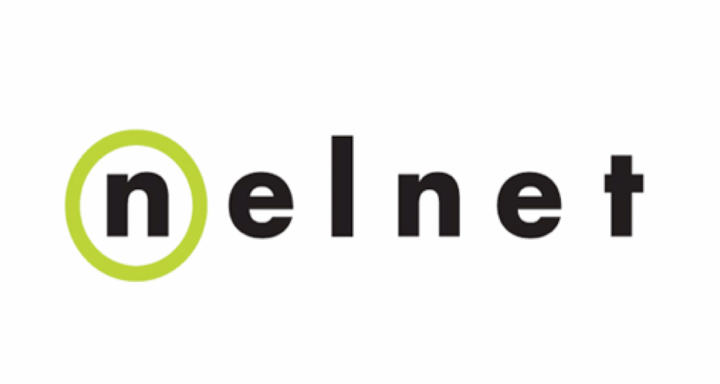
Nelnet
Our project aimed to streamline the data conversion process for FACTS SIS by developing an interactive dashboard that assists clients in auditing, approving, and tracking their data onboarding progress. Initially, we focused on automating the data conversion process, but after evaluating project needs, we shifted our focus to creating a user-friendly dashboard. This solution includes visual tracking for onboarding phases, validation tools, and direct links to training resources, making the implementation process more efficient for clients.
In the later stages, we introduced core UI functionalities, including a navigation bar, a toggle switch between table and person views, real-time data updates, search and sort capabilities, and loading indicators. These features ensured seamless data interaction and usability. The project’s success was marked by the deployment of a functional, sponsor-ready website, offering a streamlined, transparent, and efficient data onboarding experience for FACTS SIS clients.
Throughout the school session, we followed the Scrum methodology, using planning poker to estimate story points and organize our development tasks. The team iterated and validated our database design in collaboration with sponsors to ensure it meets all required use cases. Progress included integrating the data into the frontend, and APIs while implementing core UI features like pagination, validation rules for 15 tables, and help tooltips to enhance the user experience. Our initial website deployment allowed sponsors to provide feedback, guiding further refinements.

Scoular
To create a more reliable, unified, efficient, and user-friendly application for Scoular’s users, the team developed the Scoular Electronic Notification and Documentation (SEND) solution within the Microsoft ecosystem. This initiative addressed the fragmentation of existing systems by consolidating customer data, storage, environment, database, and integrations. By following Agile and Scrum methodologies, the team worked closely with Scoular’s staff throughout the project to ensure the successful delivery of an intuitive and efficient solution.
SEND was built to enhance Scoular’s operations through a robust Notification and Documentation Enrollment Printer Control and Document Routing—into a single application, enabling users to view, add, and edit information as needed to manage their workflows effectively. The application streamlines customer data collection, providing a reliable and scalable data platform, supporting consistent communication with other Scoular services. At the Front-end, we used Microsoft Power Apps, utilizing Angular and accessible interface that allows user interaction. To enhance overall efficiency, Microsoft Power Automate was used to implement cloud flows that streamline and automate routine processes.
At the conclusion of development, the SEND application was handed off to Scoular’s IT team, providing a strong foundation for ongoing improvements and future enhancements while meeting the specific needs of Scoular’s users.
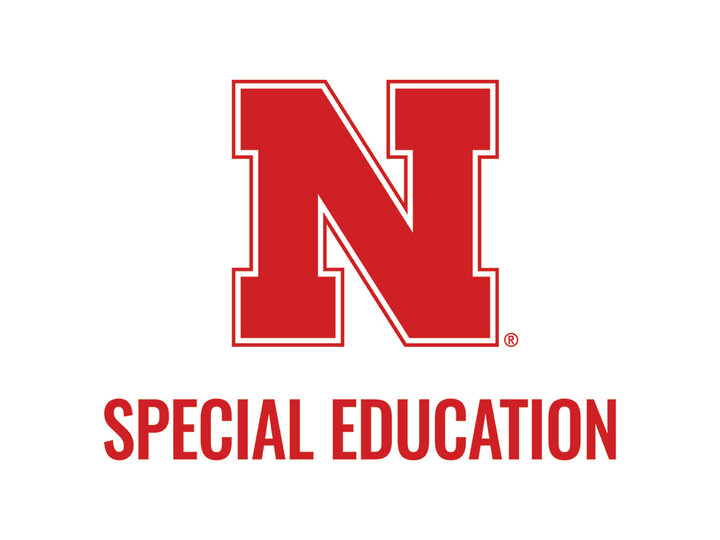
UNL, Department of Special Education and Communication Disorders
Children with disability-related speech impairments often face significant challenges in expressing themselves, impacting their interactions with their family and friends. Communication plays a critical role in the development of children of all ages. These impairments can make it very difficult for children to build relationships, share their needs, and express their thoughts and feelings. Many children who are in this situation depend heavily on augmentative and alternative communication (AAC) devices. These devices give them a voice, but the options for expressing emotion within these AAC devices are limited and inefficient, making it harder for them to express emotions effectively. This project aimed to improve the emotion-conveying abilities of AAC devices.
The team addressed this need with two main approaches: a user-centered design (UCD) process and AI model integration. The first AI model detects a user’s emotion via the camera while the second AI model makes the transition from environmental sounds to text on the screen of a user’s device. The data is collected as the user’s device and is used to train the models. The models then output the two AI models and determines the true emotion of the user based on the inputs. This solution allows for more consistent data to be turned on by the user within the team’s app.
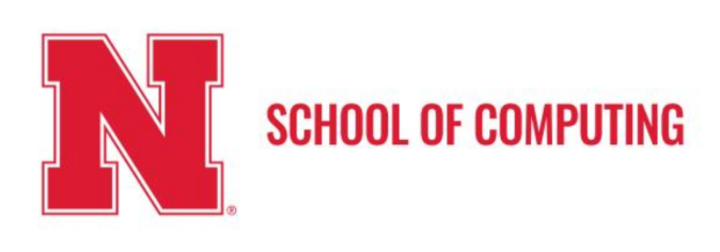
UNL School of Computing—Bohn
One of the core goals of Running Robots Rerun was to create a scalable, accessible, and easily reproducible game that allows others to build their own bots and participate in the game. By focusing on developing a framework that focuses on the expansion and customization. The game now features two main modes: Laser Tag and Capture the Flag, in which players can compete against other robots are controlled using the game app, while the Web app is responsible for connecting to the robots, viewing/managing scoreboards, and running games.
On the hardware, the team designed component integration and reduce costs, utilizing a $150 Raspberry Pi 4B, while managing the software side of the most significant transitions was moving from an ESP32 microcontroller to a Raspberry Pi 4B, while managing the software side. With the introduction of the Raspberry Pi, the team now has a more user-forward graphic interface, better connectivity, and processing power, and better capability.
The team developed a mobile app to provide more control of the robots, allowing players to maneuver their bots smoothly using an intuitive interface. The Web app was redesigned with a sleek, retro aesthetic and serves to manage the overall game.
Running Robots Rerun is now a more polished, modular, and portable experience. The introduction of a low-cost, DIY framework improves accessibility, and custom robot controls allow for a more comprehensive user experience.

UNL SoC Capstone Kiewit Hall
The Kiewit Garage team was tasked with adapting the Innovation Campus Studio Manager software to better fit the newly-opened Kiewit Garage. The usage of this space differs largely from the Innovation Campus Studio in both userbase and available services, so both the adaptation of the existing features and the addition of new features were required. As an additional challenge, these changes needed to be deployed to a live site to accommodate the incremental opening of Kiewit Garage.
The team got to work right away on the most pressing features requested by the sponsor, which included the revised user management workflow specific to the Kiewit Garage, which allowed the sponsor to begin giving users access to the Kiewit Garage Studio Manager. The team worked within the existing architecture, written in Ruby Sinatra with a SQLite backend, to add to the live website that did not affect the Innovation Studio’s version of the software. The second wave included new features that were specific to the Kiewit Garage. The main request in this release was a project storage tracking system to help Garage staff efficiently store and locate student projects within the warehouse section of the Garage itself.
Finally, the team again adjusted the features that were to be brought over from the Innovation Campus software. Implementing the Single Sign On (SSO) system that UNL already utilizes eliminated the need for users to have separate login credentials for the Garage Manager. Upgrading the existing lockout/tagout system allows for more flexibility for staff to schedule maintenance and notify users of inoperable equipment. The final product was a tailored solution that allowed both students and staff to interact and schedule usage of Garage equipment according to the sponsor’s vision for the space, automating workflows for staff that save days of manual data entry, eliminate human error, and reduce training time.

UNL School of Computing—Falkinburg
Husker Scope’s main challenge has been to provide an economical and accessible solution to using various electronic measurement equipment. The electronic measurement equipment supported by Husker Scope includes oscilloscopes, function generators, and spectrum analyzers—in a single channel analyzer, a dual-channel function generator, and an AF/MW modulator. This year’s team focused on improving the existing Husker Scope 3.0 to increase the sampling rate of the hardware, increase hardware memory, add hardware logic analyzer, and support mobile platforms.
The team made two major changes to design an improved version of Husker Scope 4.0. The first change was to design a new circuit for reading analog data. This new circuit enabled reading a wide range of voltages and increased frequency range that goes far beyond the audio range that it was previously limited to, allowing the device to add major change to the additional features to improve samples could be stored, so that more samples could be stored.
The team implemented wireless communication of data using Bluetooth Low Energy (BLE) between the hardware and iOS and Android mobile applications. Previously, the Husker Scope hardware was unable to interface with mobile devices, and USB cable connectivity was needed to connect to computers. Specifically, the team implemented triggering modes, so that the logic analyzer could trigger off of a rising or falling edge. A custom protocol was created to allow for reliable communication between the hardware and application to communicate with each other.

UNL School of Computing—Sharif
Eye-tracking in film is an integral part of an athlete’s growth; it provides an objective point of reference for analyzing their performance. Additionally, viewing film of more experienced athletes can display techniques and strategies that less experienced athletes can learn from. Coaches use the effectiveness of film watching for their individual athletes. To find a solution to this issue, the team was tasked with creating a webapp that uses eye tracking to confirm which film recruits and athletes are watching, and what their eye movements are while watching the film.
The team’s approach wasn’t without its hurdles. The team started with a 60 Hz eye-tracking webcam, but it wasn’t the quality of the eye-tracking hardware often captures data at 60 Hz with multiple cameras and a near-infrared function. Webcams typically used for eye tracking weren’t effective for this project, and the team was working with only half the data and one camera. This meant that to make the implementation of iTrace based on infrared eye tracking, the team needed to use an eye-tracking infrastructure and an eye-tracking library to help with the eye tracking had to be the first tool they had to use. Due to their approach after discovering that the tool isn’t fully compatible with the webapp’s architecture.
The webapp is comprised of a Django backend with a React frontend. The team decided to use Material UI to give the webapp a consistent, modern design. Functionality is dependent on whether the user is a coach or an athlete. Coaches can create teams, assign videos to those teams, select relevant and important areas of film clips, and review what athletes saw while they watched film. Athletes are able to watch film assigned to them by their coaches and answer questions posed by the coaches on the webapp. Coaches are able to provide feedback on film watching techniques and tailor instruction based on what they see audiences focus their attention on. Object detection in the film helps the coach identify players and the ball network to identify players and the ball.

UNL School of Computing—Yao
The Yao lab has deep expertise in researching and developing protein language space through sequence patterns in various biological applications. With the use of machine-learning models, the Yao lab has amassed various protein language spaces that can be used to explore sequence patterns that they have acquired. To further enhance this research, the lab wished to create a user-friendly Web application that visualizes the protein data they have collected. This project aimed to allow users to freely interact with proteins within a virtual space, allowing them to explore protein data while being able to view information of the data being interacted with.
As a start to this project, the team decided to first design and develop a Web application without much accessibility to VR equipment in the Yao lab. The team utilized the JavaScript library, Three.js, a Web framework for building virtual spaces on the Web application to interact and view protein data. The Web app was made to be comprehensive to allow users to explore the protein data, including single and multiple selections to select and display their information, movement controls, and other minor additions.
In the VR mode, the team utilized Meta Quest 2, Meta Quest 3, and Apple Vision Pro as platforms. As a team, we decided what features to include for each of the VR and created optimizations for each that were made compatible inside the VR. Tangible buttons were created for each platform to freely explore the protein data inside the VR space. The user is also able to move around the VR space while using controllers and hand gestures to view the data from any angle.
As a result, Build Protein Language Space in VR provides a user-friendly and interactive visual application of protein functions and sequence patterns. The Yao lab will continue to improve and optimize what the team has accomplished to further their research.
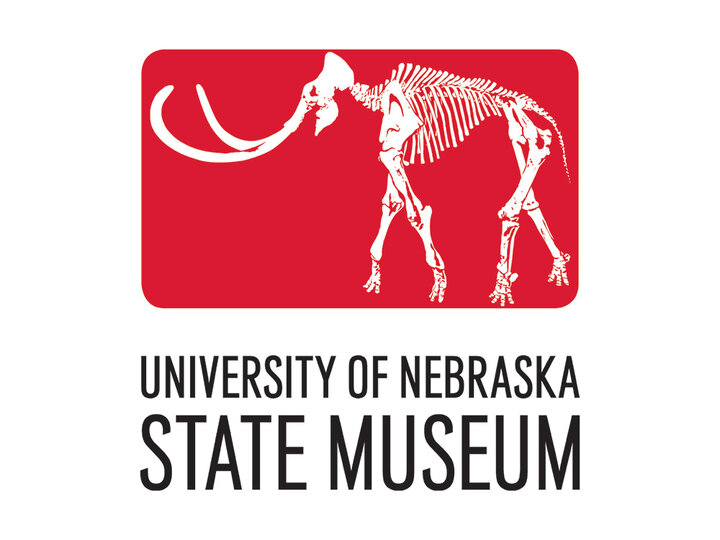
UNL State Museum
The University of Nebraska State Museum is faced with significant challenges in managing group reservations for field trips and other events at Morrill Hall. The existing system requires visitors to call the museum to book a time slot, and wait for staff confirmation, often resulting in delays and cumbersome back-and-forth communication. These inefficiencies consume a large amount of staff time and make it difficult to meet growing demand. Teachers, already pressed for time in organizing field trips, experience frustration with the lengthy reservation process, limiting the museum’s ability to maximize its available resources and services, hindering its growth.
To address these challenges, the goal of the project focused on creating an online reservation system. The new system allowed educators to directly select available dates and services, significantly reducing the need for manual interventions by staff members.
This solution greatly reduced the manual workload for museum staff, freeing up valuable time to focus on other critical tasks such as program development and visitor engagement. The online system provides a user-friendly, straightforward way to secure dates for field trips, easing much of the stress and administrative burden that had previously been involved. Ultimately, the project enhanced both the visitor experience and the museum’s operational efficiency.
The implementation of the new system contributed to a more seamless and efficient scheduling process, benefiting both the museum staff and its visitors. The University of Nebraska State Museum ensured a smooth workflow, increased the number of field trips it could accommodate, and improved accessibility for educators and students alike. This technological upgrade marked a significant step in making the museum’s services more accessible and better aligned with the needs of its community.
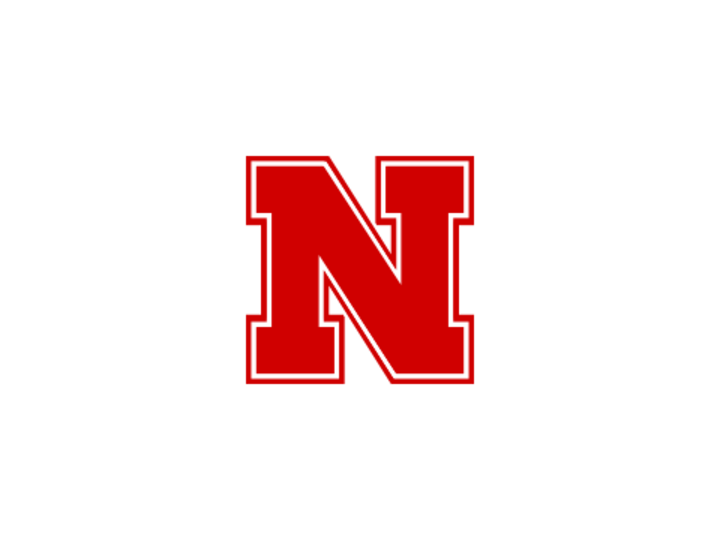
UNL University Operations
UNL University Operations measures the amount of electricity, steam, chilled water, natural gas, and water used by each building. Readings of most utilities are taken over the network every 15 minutes, but water meter readings are taken monthly, which is considered “old.” The old system often offers a low accuracy, low resolution method of monitoring water usage, making data collection inefficient, hindering the team’s ability to accurately monitor water usage across campus buildings, and causing delays in identifying buildings that are equipped with water meters that have the goal of this project was to leverage the AMRAUTOMATIC Meter Reading (AMR) technology to improve the efficiency, accuracy, and frequency of water usage data and upload it to a central database for analysis.
The team focused their efforts on wirelessly capturing SCM water meter data via RTL-SDR receivers. The team leveraged an open-source RTL-SDR project to capture data seamlessly across campus. The team ensured that all data was secure during transmission. The next step was storing the data in a stable database to satisfy UNL’s data storage needs while also meeting the stakeholder’s requirements. The challenging and many revisions to the ER Diagram were necessary to secure all important data and relationships.
The next goal was developing a Web server to display water meter data in a user-friendly interface. The team utilized Express.js to accomplish this. The displayed objects are kept secure through authentication and authorization for each level of consumption, and other important information. On top of this, the Web server allowed admins to create, update, and delete individual feature instances directly. By deploying Raspberry Pi’s across campus, an autonomous network was created, effectively created an automated way to monitor water usage on campus putting water in line with all other utilities.
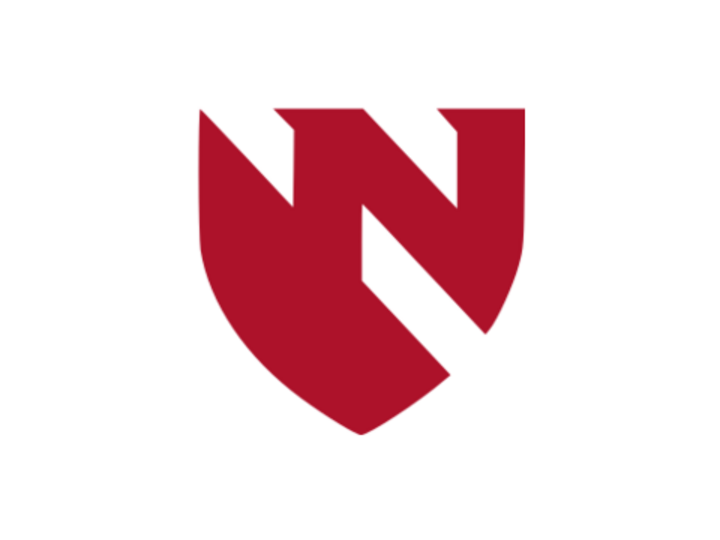
UNMC College of Nursing
Journey Through the Kidney project is supported by the Magic School Bus animated series and Curio XR’s educational app. The objective was to create an interactive experience to educate students on the kidney and its processes. The project focuses on placing the user inside the kidney to understand the organ’s role in filtering blood, the nephron, and the tour also features a game assessment to test the student’s knowledge. The project supports science curriculum for nursing students and provides hands-on virtual reality education experience in the classroom through the kidney, a checkpoint system, and a game assessment.
The checkpoint system provides educational learning and smooth movement through the kidney tour. The beginning is in the renal artery where the user is shrunk to the size of a red blood cell to journey through the nephron. One major feature the team refined early was movement throughout the modules. Last year’s heart tour team used a set position to move the user through the experience, which caused motion sickness. The team updated the rail system that allows for movement through the nephron, the user moves through the experience with checkpoints. The user can choose which direction to look while moving through the nephron, using a particle animation system to show the journey of the filtrate.
The game assessment tests the player’s knowledge on filtrates. Inspired by the popular game Beat Saber VR, the team developed a fun and interactive solution to understand the filtration process within the nephron. The team created assessment tests on the memorization, association, and knowledge of particle filtration. The player’s goal is to catch the proper filtrates while avoiding the wrong ones. The nephron has different parts of the nephron. Each level represents a different part of the nephron. Players shoot for high scores by catching the correct filtrates and ignoring the wrong ones.
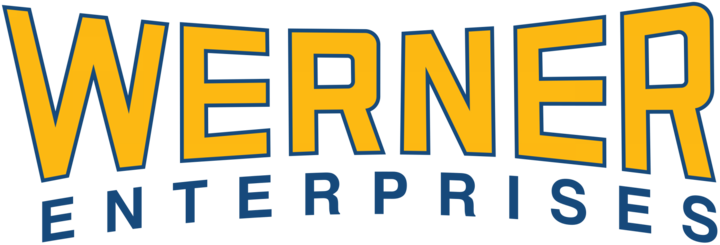
Werner Enterprises
Werner Enterprises is one of the top transportation and logistics companies in the U.S., based out of Omaha, Nebraska. With thousands of trucks, each of which has hundreds of parts, they needed a solution to easily track the active warranties for all the parts on each truck. The goal was to create a Web application to track active warranties for all the fleet, working in tandem with Werner, developed a Web application to allow real-time tracking and replacement of warranties. With our application, Werner can track warranty information for each part and maximize their savings on each repair.
The Warranty Tracker application uses Next.js and React with a SQL database backed to allow for real-time monitoring of active warranties across the Werner fleet. This application focuses on ease of use by allowing users to search warranty information by individual trucks and see all parts associated with it. Alongside the parts is displayed the vital information of each part, such as the time left on the warranty and time left on the part. The user also has the ability to select a part to gather more information on that specific part such as the warranty start and end date, helping Werner employees track and manage active warranties that are expiring soon.
With this Warranty Tracker, we hope to help Werner make informed decisions when making repairs to better utilize warranties and maximize their savings.
